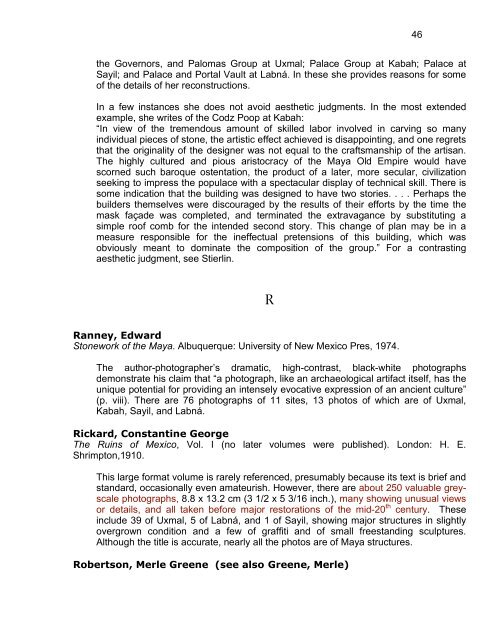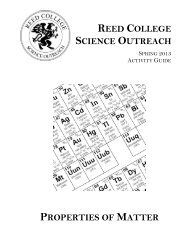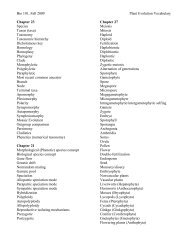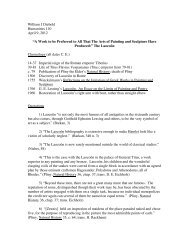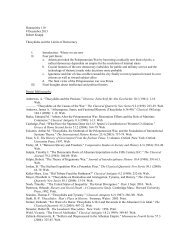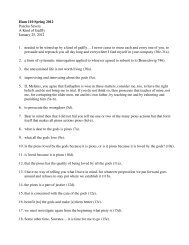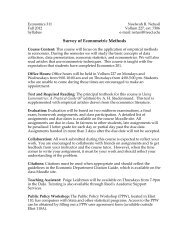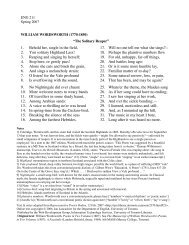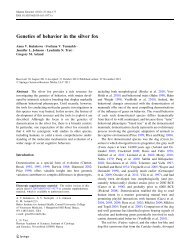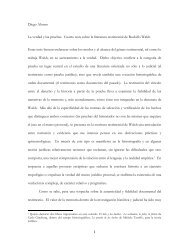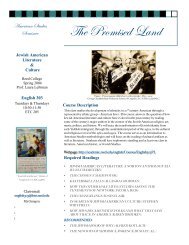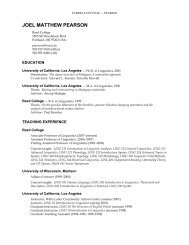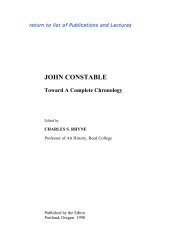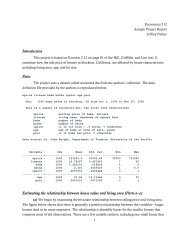Graphic and Photographic Documentation - Reed College
Graphic and Photographic Documentation - Reed College
Graphic and Photographic Documentation - Reed College
You also want an ePaper? Increase the reach of your titles
YUMPU automatically turns print PDFs into web optimized ePapers that Google loves.
the Governors, <strong>and</strong> Palomas Group at Uxmal; Palace Group at Kabah; Palace at<br />
Sayil; <strong>and</strong> Palace <strong>and</strong> Portal Vault at Labná. In these she provides reasons for some<br />
of the details of her reconstructions.<br />
In a few instances she does not avoid aesthetic judgments. In the most extended<br />
example, she writes of the Codz Poop at Kabah:<br />
“In view of the tremendous amount of skilled labor involved in carving so many<br />
individual pieces of stone, the artistic effect achieved is disappointing, <strong>and</strong> one regrets<br />
that the originality of the designer was not equal to the craftsmanship of the artisan.<br />
The highly cultured <strong>and</strong> pious aristocracy of the Maya Old Empire would have<br />
scorned such baroque ostentation, the product of a later, more secular, civilization<br />
seeking to impress the populace with a spectacular display of technical skill. There is<br />
some indication that the building was designed to have two stories. . . . Perhaps the<br />
builders themselves were discouraged by the results of their efforts by the time the<br />
mask façade was completed, <strong>and</strong> terminated the extravagance by substituting a<br />
simple roof comb for the intended second story. This change of plan may be in a<br />
measure responsible for the ineffectual pretensions of this building, which was<br />
obviously meant to dominate the composition of the group.” For a contrasting<br />
aesthetic judgment, see Stierlin.<br />
Ranney, Edward<br />
Stonework of the Maya. Albuquerque: University of New Mexico Pres, 1974.<br />
R<br />
The author-photographer’s dramatic, high-contrast, black-white photographs<br />
demonstrate his claim that “a photograph, like an archaeological artifact itself, has the<br />
unique potential for providing an intensely evocative expression of an ancient culture”<br />
(p. viii). There are 76 photographs of 11 sites, 13 photos of which are of Uxmal,<br />
Kabah, Sayil, <strong>and</strong> Labná.<br />
Rickard, Constantine George<br />
The Ruins of Mexico, Vol. I (no later volumes were published). London: H. E.<br />
Shrimpton,1910.<br />
This large format volume is rarely referenced, presumably because its text is brief <strong>and</strong><br />
st<strong>and</strong>ard, occasionally even amateurish. However, there are about 250 valuable greyscale<br />
photographs, 8.8 x 13.2 cm (3 1/2 x 5 3/16 inch.), many showing unusual views<br />
or details, <strong>and</strong> all taken before major restorations of the mid-20 th century. These<br />
include 39 of Uxmal, 5 of Labná, <strong>and</strong> 1 of Sayil, showing major structures in slightly<br />
overgrown condition <strong>and</strong> a few of graffiti <strong>and</strong> of small freest<strong>and</strong>ing sculptures.<br />
Although the title is accurate, nearly all the photos are of Maya structures.<br />
Robertson, Merle Greene (see also Greene, Merle)<br />
46


